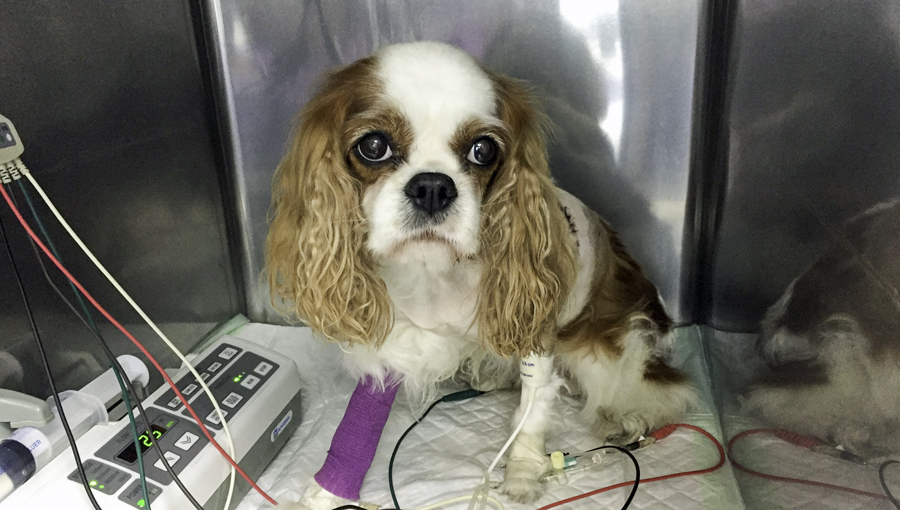
Mitral Valve Repair Surgery
By Kim Campbell Thornton
When my six-year-old tricolor Cavalier Darcy was dying from mitral valve disease in 2006, I contacted top cardiologists at universities around the country asking if some kind of surgical repair or valve replacement was available. No, they said sadly. It’s been tried and has never been successful.
Darcy died seven months after her disease started to progress, but at about the same time, halfway across the world, a Japanese veterinary surgeon named Masami Uechi was in the process of developing a surgical technique to repair the mitral valve.

Eleven years later, I again had a dog who had been diagnosed with mitral valve disease.
MVD is the most common heart problem seen in dogs. It is the leading cause of death in Cavaliers in the world, but it’s not limited to them. Other toy and small-breed dogs are at risk, including toy Poodles, Chihuahuas and Maltese, to name a few, including mixes of any of these breeds. It usually affects senior dogs, but in Cavaliers it typically has an onset much earlier in life.
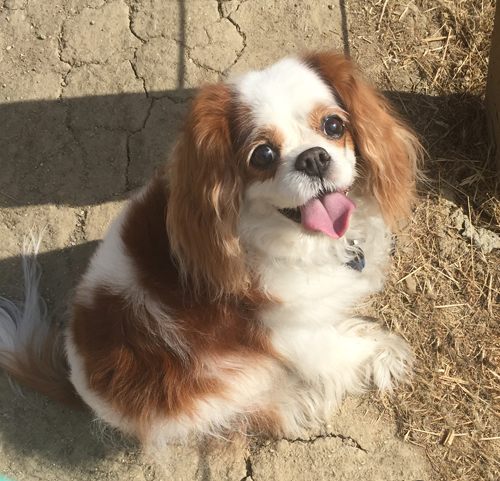
The disease occurs when the mitral valve—one of four heart valves that keep blood moving in the proper direction—starts to degenerate. Instead of opening and closing with the heart’s pumping action, it allows blood to leak back into the left atrium, a process called mitral regurgitation. That means the heart, which is a muscle, has to pump harder to move blood through the body, causing it to enlarge. For body builders, enlarged muscles are a good thing, but for hearts, not so much. In some cases, chordae tendinae, the fibrous cords that hold valve leaflets, the flaps that open and close to control the flow of blood through the heart, can rupture. That also causes the mitral valve to malfunction or can even lead to sudden death.
By the time my 9-year-old Blenheim Cavalier Harper was diagnosed as being in the early stages of congestive heart failure from MVD, I had heard of Dr. Uechi’s surgical repair, but I still didn’t know much about it. I found a Facebook group dedicated to people whose dogs had either had the surgery or were interested in getting it for them and spoke to two people whose dogs had successfully undergone the procedure.
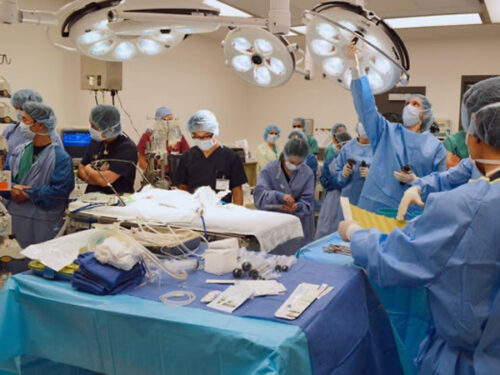
I asked Harper’s cardiologist if she knew anything about “that surgery.” She did. Her husband, also a veterinary cardiologist, had a client whose dog had undergone it and done well afterward. She thought Harper would be a good candidate. I called another cardiologist I knew at UC Davis. He confirmed that the procedure had a good success rate and was the way he would go if his Cavalier ever needed it.
That was enough. We were in.
Dr. Miller began the process of getting Harper approved. After a flurry of lab tests and diagnostics, we were advised by email on March 7 that she was scheduled for surgery on May 26, 2017. That meant we had two months to get ready to fly to France, where Dr. Uechi traveled every other month to perform a week’s worth of surgeries (an option that is no longer available). There was paperwork to complete, a loan to get, a new microchip and an updated rabies vaccination, and AirBNBs to find in Paris and Versailles. The surgery took place at a veterinary clinic in Versailles, but I scheduled three days in Paris first. If everything went south, I wanted us to have some fun memories of the trip.

Did I say a loan? Yes. Going to France was the most expensive option but taking Harper to Dr. Uechi’s clinic in Japan would have meant a wait of seven months to meet all of the country’s entry requirements, and we didn’t know if she had that much time. We financed the trip with a home equity line of credit. I also got a job on top of the freelance writing that was my primary occupation, and when I inherited my dad’s classic Corvette a couple of years later, I sold it to pay off the remainder of the loan.
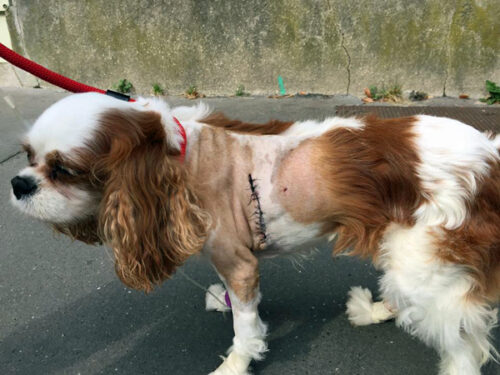
The surgery was successful, and it was difficult to keep Harper inactive during the three-month recovery period. She went on to complete a successful nose work career, achieving Elite 1 level in competition before Covid put an end to competitions for a couple of years.
What they tell you about this surgery is that your dog will live long enough to die of something else. Harper lived five and a half more years before dying of squamous cell carcinoma of the tonsils, just a month before her 15th birthday. If it weren’t for that, she would be with us still. I know of many dogs who have lived more than five years post-surgery.
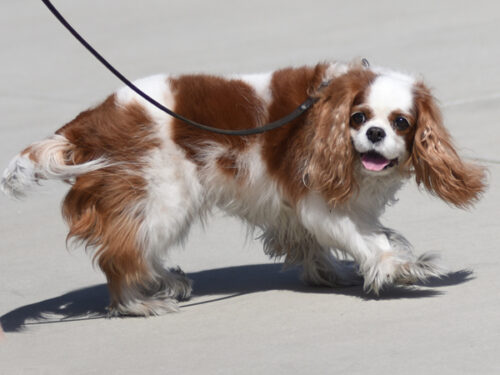
The technique is currently available at Dr. Uechi’s JASMINE Clinic in Yokohama, Japan, as well as in the United Kingdom, at the Royal Veterinary Hospital and at Dick White Referrals. Both of the British surgeons are experienced with the procedure and have a good success rate. In both Japan and the UK, it costs approximately $20,000, plus travel expenses.
For more information, join the Mighty Hearts MVD Community Facebook page. Even if you aren’t interested in surgery, the members are experienced at dealing with this disease and offer good advice on living with a dog who has it. If you are considering surgery, there’s no better place to get guidance on where to go, how to get there, where to stay, how to complete the paperwork, and more. I’ve never regretted doing it.
Kim Campbell Thornton
